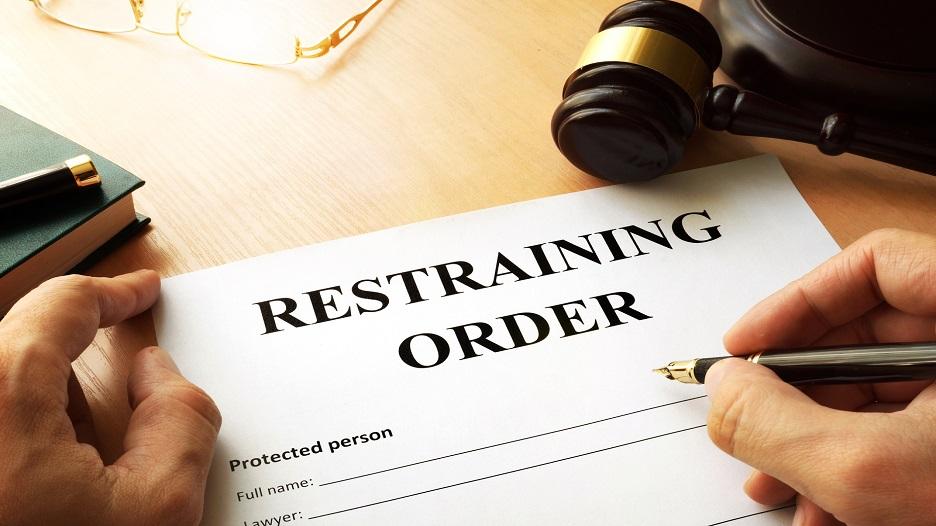Requirements for a Restraining Order in Texas
Our product recommendations are made independently, but we may earn affiliate commissions if you use a link on this page.
Restraining orders in Texas come in handy in a wide range of situations. For example, if you feel threatened by someone, you can file a restraining order against them.
Likewise, a restraining order can bail you out if you’re subjected to domestic abuse or abuse of any kind. The best part is that getting a restraining order in Texas is not difficult.
All you need to do is meet the requirements for a restraining order in Texas, and you’re good to go. Ready to utilize this “weapon” against threats? Let’s dive in.
What Is a Restraining Order?

As the name suggests, a restraining order is a legal document that contains a court order that restrains two individuals from coming in contact with each other.
Usually, one party is instructed not to be around or hover around the other party’s space, home, and/or place of work. The document highlights the dos and don’ts of the party being asked to stay away from the other party.
Although restraining orders are used in various cases, it is mostly used in domestic violence or divorce cases.
For instance, in a marriage or relationship where one party physically abuses the other, the abused can file a restraining order against the abuser.
Likewise, a couple going through a divorce can choose to file a restraining order against each other.
Now, restraining orders are not only useful in marital-related cases.
Anyone can file a restraining order against a stalker - if they feel they’re being stalked.
You can also file a restraining order against a family member or friend if you feel like they pose a threat to your existence.
It is also relevant in a sexual assault case. If the other party being restrained violates the order, there would be consequences.
Restraining Order vs Protective Order in Texas: Different or Similar?
Generally, restraining orders and protective orders are similar. They are sometimes used interchangeably. However, there are subtle differences between them.
For starters, restraining orders are mostly for civil cases. They instruct one party to stay away from the other party. They are also useful in divorce proceedings. Usually, people use restraining orders in cases that are not criminal or abusive.
On the flip side, protective orders come in where the case has graduated into a criminal family case. For instance, it comes into play when a partner physically abuses the other partner and kids.
In this case, the protective order doesn’t only restrict one party from coming in contact with the other. It also protects the victim from further assault by explicitly restricting the actions of the abuser.
Here, the abuser could be instructed not to come within 500ft of the victim.
A protective order could also extend protection to the victim’s family members.
Types of Restraining Orders You Can File in Texas
In Texas, residents subjected to family violence or threats like stalking and assault can file three types of protective orders. Here’s a peek into these types of restraining orders.
Restraining Order Texas: Highlights
1. Final or Permanent Protective Order
Permanent protective orders have a long-term life span. For instance, some could last up to 2 years. Depending on the gravity of the circumstance, the court can extend the order beyond two years.
However, the accuser can sign a petition for the order to be lifted after a while. In that case, both parties would meet before a judge at a set hearing date.
2. Temporary Ex-Parte Protective Order
Temporary protective orders do not last very long. For this order to be approved, the victim and the abuser would appear before a judge.
Here, the victim has to show proof of danger. That way, the court would immediately issue a temporary protective order to protect the victim from further harm, assault, or sexual harassment.
They tend to last 20 days, but the victim can request a renewal.
3. Magistrate’s Order or Emergency Protection Order (EPO)
This protective order is usually issued directly by the court after an arrest has been made.
Here, after law enforcement officials arrest the abuser and he is charged to court for family violence, a magistrate or emergency protection order would be issued.

How to File a Restraining Order in Texas - What You Need
When filing a restraining order in Texas, you’ll need to present some information. It would help when the judge reviews it.
1. Necessary Information
When you get to the district attorney’s office or court, you’ll be required to present clear proof of abuse or danger, such as police reports, photos, or witness statements.
You’ll also need to provide some information; the name of the victim(s) and where they reside, the abuser’s name and residence address, the relationship status between both parties, and the number of required protective orders.
2. An Application Form
You’ll need an application form that you’ll get at the court or the Texas district attorney’s office.
To be better prepared, you can call ahead (if you can) to know what other information would be necessary.
How to Get a Restraining Order in Texas - What Happens Afterward?
1. A Hearing Date Is Set
Once the judge reviews your petition and grants you approval, they’ll reach out to you. Then, a hearing date would be set.
2. Notify the Abuser
The abuser would be served a petition to be at the hearing.
3. Meet Before a Judge
The victim and the alleged abuser would meet before the judge in court to air their versions of the story.
As the victim, you’ll need to provide substantial evidence and proof of danger, abuse, sexual assault, and any other relevant evidence to allow the judge to rule in your favor.
4. The Judge Presides over the Case
The judge will preside over the case, and he will decide whether the restraining order will be granted or not.
Final Thought on Requirements for a Restraining Order in Texas
Now that you know the requirements for a restraining order in Texas, don’t hesitate to file for one when you feel the need.
The icing on the cake is that you can file a restraining order for a friend or family member who doesn’t have the confidence to do so.
After you’ve been granted the order, don’t hesitate to keep your guard up, especially if you suspect the abuser might be obsessed, possessive, and mentally disturbed. Stay safe!
Reference Legal Explanations
If you use any of the definitions, information, or data presented on Legal Explanations, please copy the link or reference below to properly credit us as the reference source. Thank you!
-
<a href="https://legal-explanations.com/blog/requirements-for-a-restraining-order-in-texas/"> Requirements for a Restraining Order in Texas</a>
-
" Requirements for a Restraining Order in Texas". Legal Explanations. Accessed on December 15, 2024. https://legal-explanations.com/blog/requirements-for-a-restraining-order-in-texas/.
-
" Requirements for a Restraining Order in Texas". Legal Explanations, https://legal-explanations.com/blog/requirements-for-a-restraining-order-in-texas/. Accessed 15 December, 2024
-
Requirements for a Restraining Order in Texas. Legal Explanations. Retrieved from https://legal-explanations.com/blog/requirements-for-a-restraining-order-in-texas/.